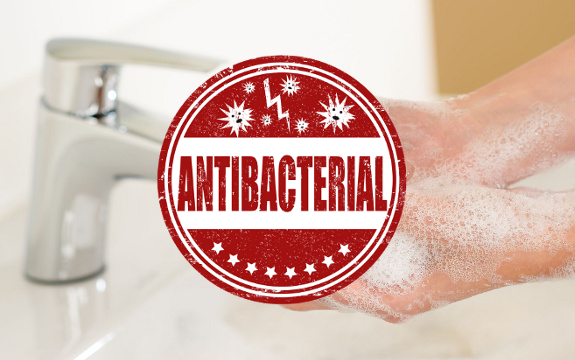Another Reason to Ditch Anti-Bacterial Soaps at Home

 School supplies used to include nothing more than the staples: pencils, notebooks, and folders. Now, however, students are asked to bring in super jumbo sized antibacterial liquids and soaps to aid their teachers in fighting the spread of illness. Children and adults alike slather these products on throughout their days in order to kill off “icky germs”. But these products, and specifically the ones containing the chemical triclosan, could actually be increasing our chances of getting sick with each passing month.
School supplies used to include nothing more than the staples: pencils, notebooks, and folders. Now, however, students are asked to bring in super jumbo sized antibacterial liquids and soaps to aid their teachers in fighting the spread of illness. Children and adults alike slather these products on throughout their days in order to kill off “icky germs”. But these products, and specifically the ones containing the chemical triclosan, could actually be increasing our chances of getting sick with each passing month.
One new study indicates that adding further fuel to this “hygiene hypothesis,” where being too clean is actually a bad thing, is the fact that people are using antibacterial soaps “incorrectly.”
The new paper from Rolf Halden, director for the Center for Environmental Security at Arizona State University, suggests that not only are we more exposed than ever to triclosan, but we are dosing ourselves in such small amounts for such brief periods that it often doesn’t even have a chance to kill the bacteria it’s designed to, leading to resistant bacteria.
As reported by LiveScience, “To effectively kill microbes, people need to wash their hands with antibacterial products for 20 to 30 seconds, but studies show people use the soaps for just six seconds on average.”
So, what’s happening in those 6 seconds? It’s difficult to say, but we know the triclosan is making its way into our bodies. Halden said about three-fourths of Americans have detectable amounts of triclosan in their urine. One study concluded that:
“In about three-quarters of urine samples analyzed as part of NHANES 2003–2004, we detected concentrations of triclosan. Concentrations differed by age and socioeconomic status but not by race/ethnicity and sex. Specifically, the concentrations of triclosan appeared to be highest during the third decade of life and among people with the highest household incomes.”
The FDA stops short of calling triclosan dangerous, but even the organization admits it’s tied to some negative health outcomes. The higher level of triclosan in children’s bodies, for example, is associated with a higher risk of hay fever and allergies. Further, triclosan has been tied to hormone disruption, weakened immune function, and even potentially increasing the risk of certain types of cancer.
“The triclosan findings in the younger age groups may support the hygiene hypothesis which maintains that living in very clean and hygienic environments may impact our exposure to micro-organisms that are beneficial for development of the immune system,” said researchers in a 2010 University of Michigan study.
Last year, the FDA announced it would move to have antibacterial chemicals like triclosan removed from personal care products unless makers could prove their safety. It’s a nice sound bite, but the follow-through remains to be seen.
